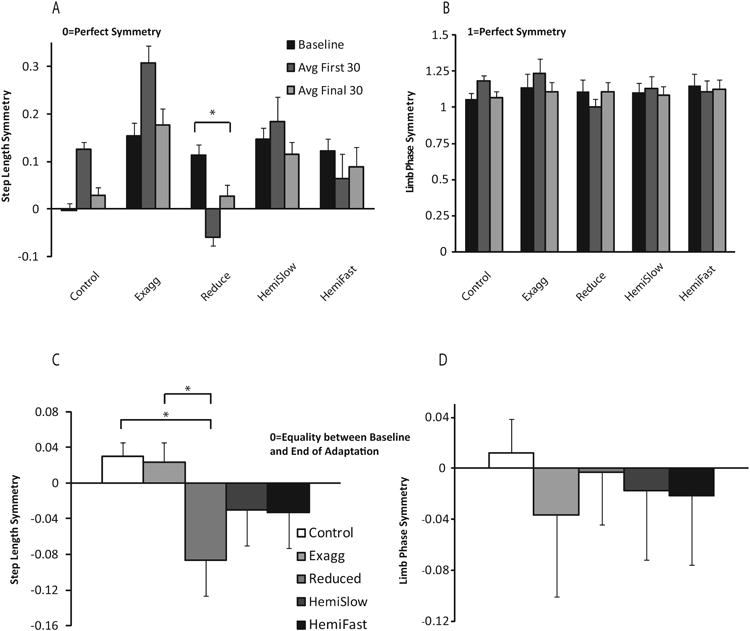Figure 3.

Step length symmetry (A) and limb phase symmetry (B) averaged across phases. Error bars represent standard error. Magnitude of step length (C) and limb phase (D) adaptation. Complete return to baseline is represented by the value of 0, positive values represent an average symmetry value higher than baseline at the end of adaptation, whereas negative values represent an average symmetry value lower than baseline at the end of adaptation. Neurologically intact group data is represented by white bars and each stroke condition is represented by a different shade of grey. Error bars represent standard error.
